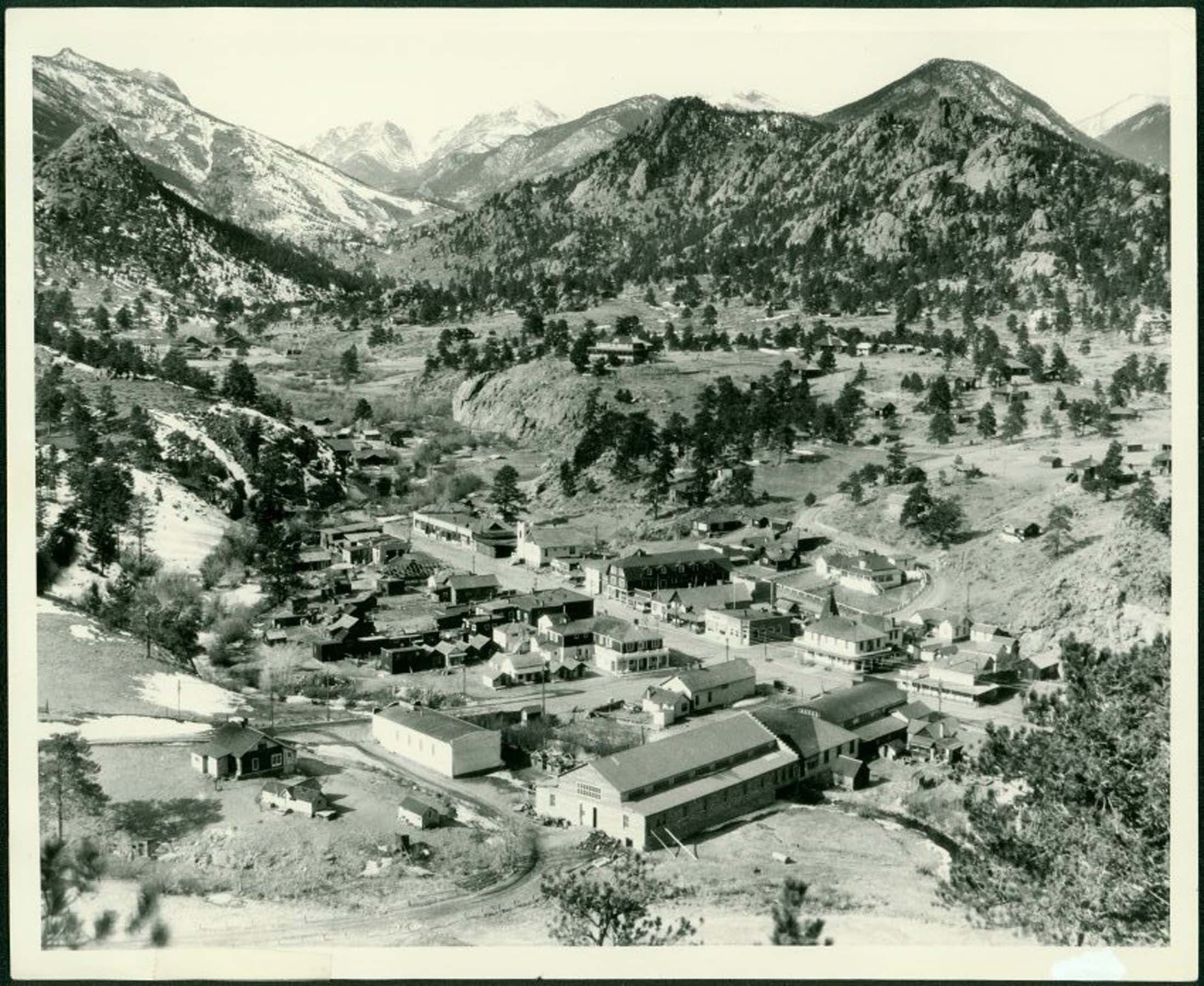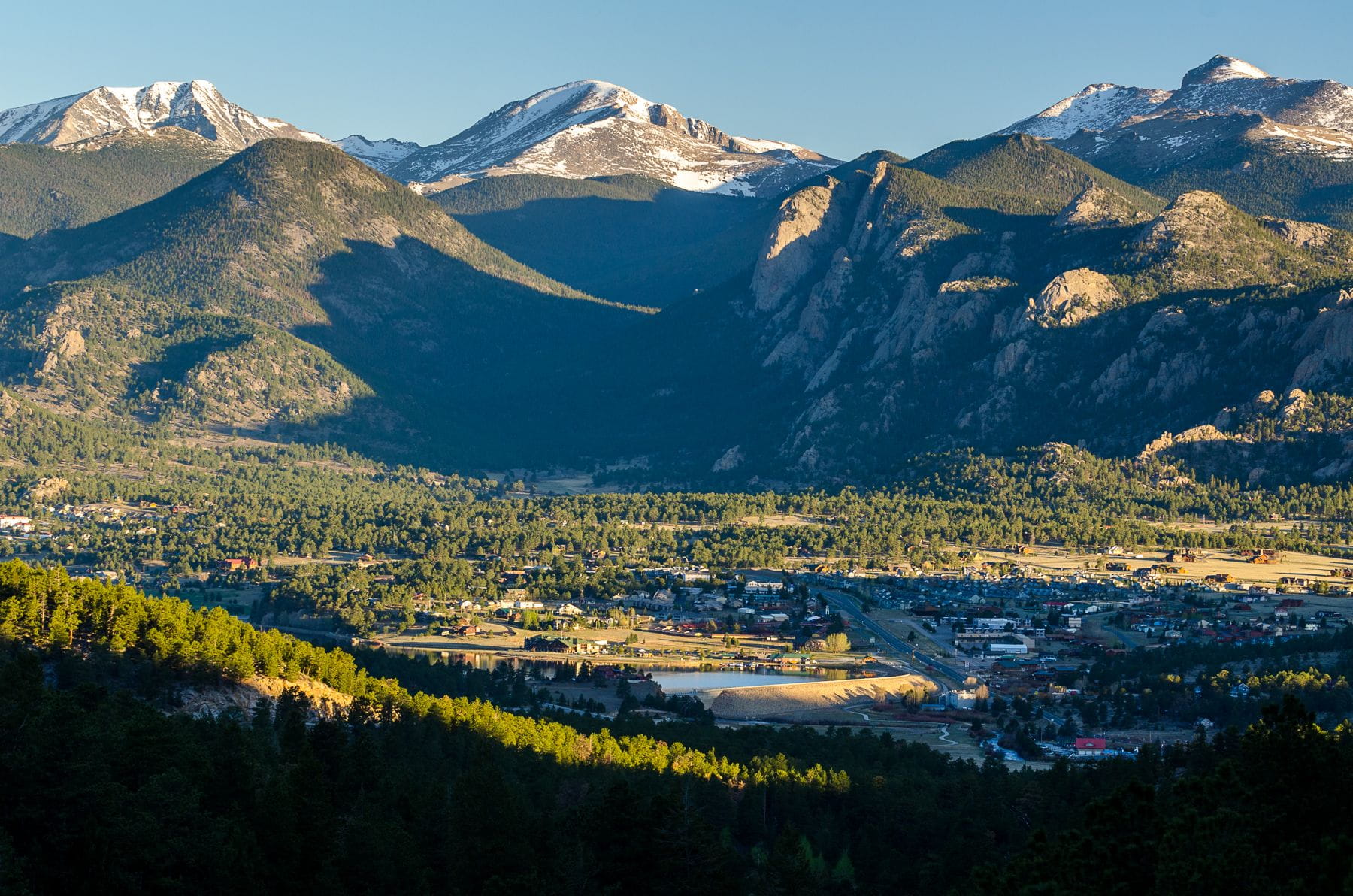The History of Estes Park

The Early Days
Estes Park’s history dates back more than 10,000 years. Prehistoric people, and later, Native Americans, would migrate here to hunt for big game and gather certain plants.
Archaeologists have uncovered game drive walls that were used by prehistoric peoples and Native Americans in the alpine tundra above Trail Ridge Road.
The Arapaho Indians came to this area for hunting and would migrate from the eastern plains to the west side up this valley. Old Fall River Road follows one of their trails.
In the early 1900s, those who were lobbying for this area to become a national park thought Congress might be more inclined to do so if area peaks and landmarks were named by the Native Americans who once lived here.
Today, Rocky Mountain National Park has one of the greatest concentrations of Native American place names in the United States.
A Few Firsts
In 1859, the first documented white men, Joel Estes and his son Milton, made their way towards a high point that looked down into a lush valley.
Estes thought the valley held promise as a cattle ranch, so in 1863 he moved his family near what is now Estes Park.
One of the visitors to the Estes cabin was William Byers, publisher of the Rocky Mountain News, a prominent newspaper in Denver that ran from 1859 to 2009, and one of Colorado’s longest running businesses.
Byers came from Denver in August 1864 with several companions, including John Wesley Powell, to climb Longs Peak. Powell and Byers were most likely the first white men to reach the summit of that high peak. Byers reported about his journey to his Rocky Mountain News readers and named the mountain valley after his host Joel Estes.
In 1873, Anna Dickenson and Isabella Bird both climbed Longs Peak, making them one of the first documented white women to do so.
Large cattle ranches were established in the 1870s by Horace Ferguson, Abner Sprague, William James, and Alexander Quiner MacGregor.
In 1904, F.O. Stanley purchased an easement from the MacGregors to lay a steel pipe from the Black Canyon Creek to his home and eventually the Stanley Hotel for running water. The Stanley Hotel was one of the first luxury hotels in the area to have running water.
A Different Kind of Gold
The main economy for Estes Park was tourism, and FO Stanley was instrumental in bringing tourists to the area. He originally came to Estes Park for fresh mountain air to treat his tuberculosis.
He was so grateful for how the mountains improved his health that he invested the rest of his life and a considerable amount of money to help the town.
In 1909, Stanley built a luxurious hotel for vacationing Easterners. There was no train service to Estes Park, so Stanley ran a fleet of 13 Stanley Steamers from the nearest train station in Loveland up the Big Thompson Canyon, now US Hwy 34. He also ran Steamers from the railroad depot in Lyons on what is now US Hwy 36.
All In A Name
A young army officer named Stephen Long named the 14,259ft Longs Peak in 1820. He gazed at it from the Front Range and never ventured into the mountains.
Mt. Meeker, second in size to Longs Peak, is named for Nathan Meeker, who came west in 1869 to establish a farming community named for his boss, Horace Greeley.
Frederick Chapin (who Mount Chapin is named for) named Hallett Peak in honor of William L. Hallett. Hallett was the first to reach its peak in the 1870s. Hallett, an avid climber, was one of the first Colorado men to climb mountains for pure enjoyment.

Park vs Park vs Park
Rocky Mtn Natl Park is a national park defined as an area set aside for the preservation of the natural environment.
A large opening created by glacial activity is also a park (Moraine Park).
The town of Estes Park is located in a valley, or park, and named for the first settler of the area.
Front Range
Colorado has seven primary mountain ranges. One of these ranges is The Front Range. This range is more than 300 miles long and extends north into Wyoming and includes Longs Peak, all the way south to Pikes Peak outside of Colorado Springs.
Because the cities of Fort Collins, Denver, and Colorado Springs all look at this incredible mountain range, these cities, including all their suburbs, are referred to as The Front Range Urban Corridor or simply The Front Range.
So when someone says they live on the “Front Range,” they are most likely referring to living in one of those cities and not on top of one of the mountains.